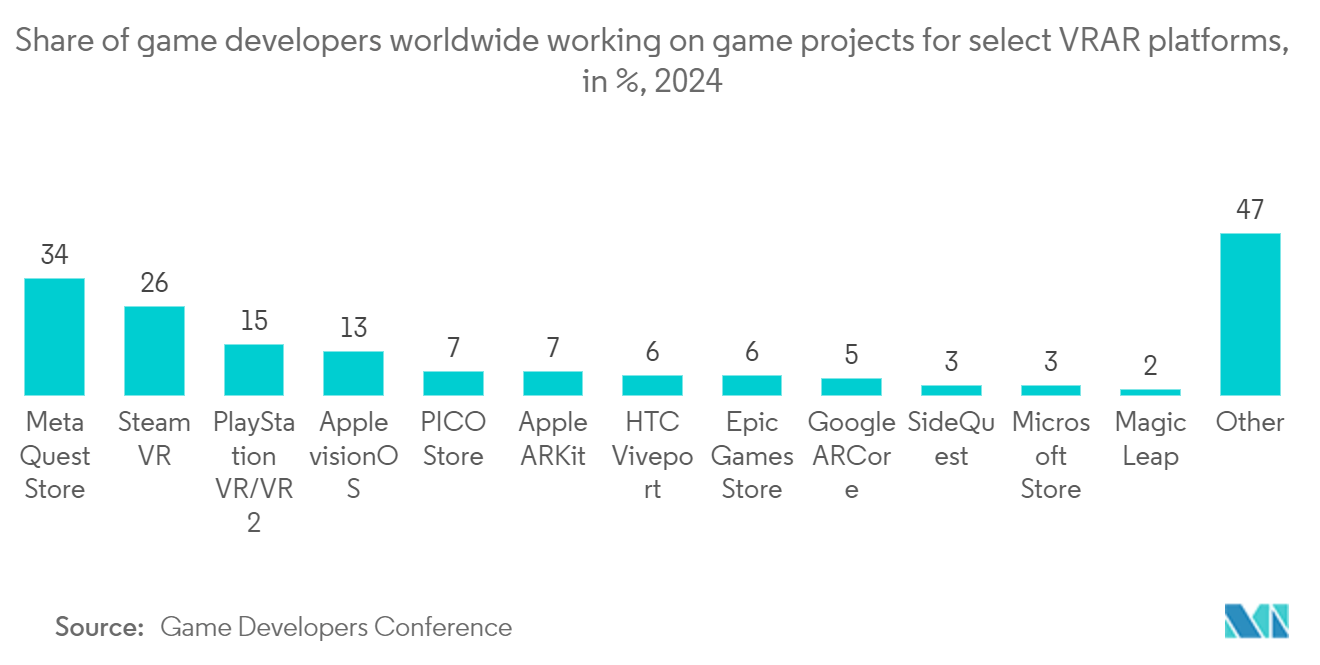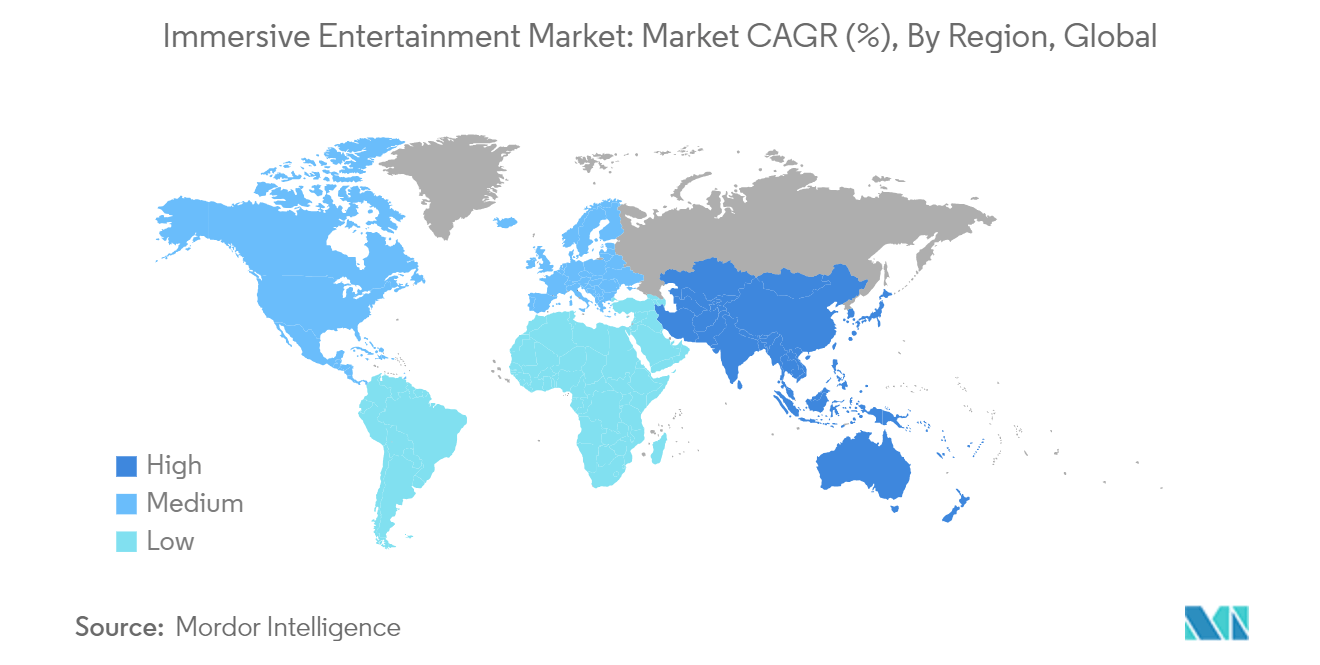Market Trends of Immersive Entertainment Industry
Increasing Consumer Demand in Gaming Entertainment is Driving the Market Growth Opportunities
- Surging consumer demand is a primary catalyst propelling the expansion of the immersive entertainment market worldwide. With a growing demand for distinctive and captivating experiences, consumers frequently find conventional entertainment methods lacking. Immersive entertainment spanning virtual reality (VR), augmented reality (AR), and mixed reality (MR) presents interactive and dynamic options, captivating a wide-ranging audience.
- Young consumers increasingly favor new and innovative entertainment choices. Their attraction lies in the personalized and immersive interaction with content. As a result, content creators and tech developers are now prioritizing these immersive experiences in their offerings.
- Moreover, the pandemic has hastened this shift. With restrictions on in-person gatherings, individuals turned to digital and remote entertainment options in greater numbers. During lockdowns, virtual experiences emerged as vital avenues for social interaction and entertainment, bolstering their popularity and acceptance.
- Demand for VR and AR games has surged in the gaming industry, fuelling increased investment and development in these technologies. Additionally, sectors like live events, theme parks, and museums are integrating immersive technologies, broadening the market's reach and allure. With consumer demand on the rise, the immersive entertainment market is set for continued expansion.
- According to the Game Developers Conference, the gaming landscape is evolving swiftly, with virtual reality and augmented reality gaming firmly establishing their presence. In a 2024 survey, 34% of global game developers reported actively creating titles for the Meta Quest Store.

North America is Expected to Hold a Major Market Share
- In North America, the immersive entertainment market thrives on technological innovations, substantial investments in AR and VR, and a robust presence in the tech industry. Notably, there's a rising consumer demand for unique, interactive experiences, particularly encouraged by younger audiences.
- The gaming industry's growth, coupled with the adoption of immersive technologies in areas such as theme parks and live events, drives the market forward. Furthermore, the pandemic hastened the shift toward digital entertainment, amplifying the demand for immersive experiences. Significant investments from leading tech firms also fuel ongoing innovation and advancements in this domain.
- In North America, rising consumer spending power and the accessibility of budget-friendly VR headsets and compatible smartphones have spurred the adoption of immersive technologies. Furthermore, the introduction of 5G networks in the US and Canada offers essential bandwidth and low latency, ensuring smooth immersive experiences and driving further market growth.
- North America's headquarters for tech giants such as Apple, Microsoft, and Meta foster swift innovation in immersive entertainment solutions. Regional governments bolster the immersive entertainment industry with funding and supportive policies. North America's vast talent pool in computer graphics, game development, and virtual reality fuels the industry's innovation.
- In May 2024, Superplastic, an IP factory renowned across animated entertainment, music, fashion, and collectible art toys, forged a strategic alliance with AREA15, a provider of immersive entertainment. This collaboration marks the debut of Superplastic's animated characters in real life (IRL). As part of the partnership, Superplastic is set to unveil an experiential space in the AREA15 entertainment district later this year. This venture promises to introduce a new experience, seamlessly merging Superplastic's signature mischief and playfulness with art, hype culture, and fashion elements.


